The global AI cryptocurrency market, which was worth $230.10 million in 2021, is projected to grow to $980.70 million by 2030.
This growth is driven by the integration of AI and blockchain technology, offering groundbreaking solutions and transforming the way we interact with digital currencies.
But which AI cryptocurrencies should you be watching as we move into 2024?
No stress—here are the top 12 AI cryptocurrencies of 2024. We picked them because they perform well, have a big market share, and bring innovative solutions to the table.
What are AI Cryptocurrencies?
AI cryptocurrencies, also known as AI coins or tokens, are a type of digital currency that incorporates artificial intelligence (AI) technology into their operations.
They leverage both AI and blockchain technology to enable transactions and interactions within decentralized AI networks, facilitating the exchange of AI services, data, and computational resources.
AI crypto coins use machine learning algorithms and natural language processing to analyze market trends, anticipate future events, and carry out automated trades.
These coins can serve as a specialized testing ground for new AI and machine learning models, applications, and algorithms in a decentralized and open environment.
They can also enhance network security, with some coins using technologies like facial recognition to validate transactions and prevent fraud.
Must-Have AI Cryptocurrencies Available in Today’s Market
Check out the leading AI cryptocurrencies for 2024. Running low on time? Just take a look at the crypto space in the handy overview table below.
| AI Cryptocurrencies | Current Market Cap | What makes it different? |
|---|---|---|
| SingularityNET | $369 million | Decentralized AI marketplace running on blockchain. |
| Phala Network | $67 million | Confidential smart contract network providing privacy-preserving computing. |
| Fetch.ai | $426 million | Decentralized machine learning platform for AI agents. |
| Render Token | $1.16 billion | Decentralized GPU rendering network for 3D graphics. |
| Ocean Protocol | $251 million | A data exchange platform powered by blockchain. |
| Oasis Network | $549 million | Privacy-focused blockchain platform for open finance and data economy. |
| iExec RLC | $104 million | Decentralized marketplace for cloud computing resources. |
| The Graph | $1.32 billion | Indexing protocol for organizing blockchain data and serving queries. |
| dKargo | $110 million | Blockchain CDN and middleware platform. |
| Alethea AI | $88 million | Decentralized network enabling the creation and distribution of AI models as NFTs. |
| Covalent | $125 million | Unified API bringing visibility to blockchain data. |
| Hera Finance | $16.66 million | A data cloud for Web3 analytics and indexing. |
1. SingularityNET
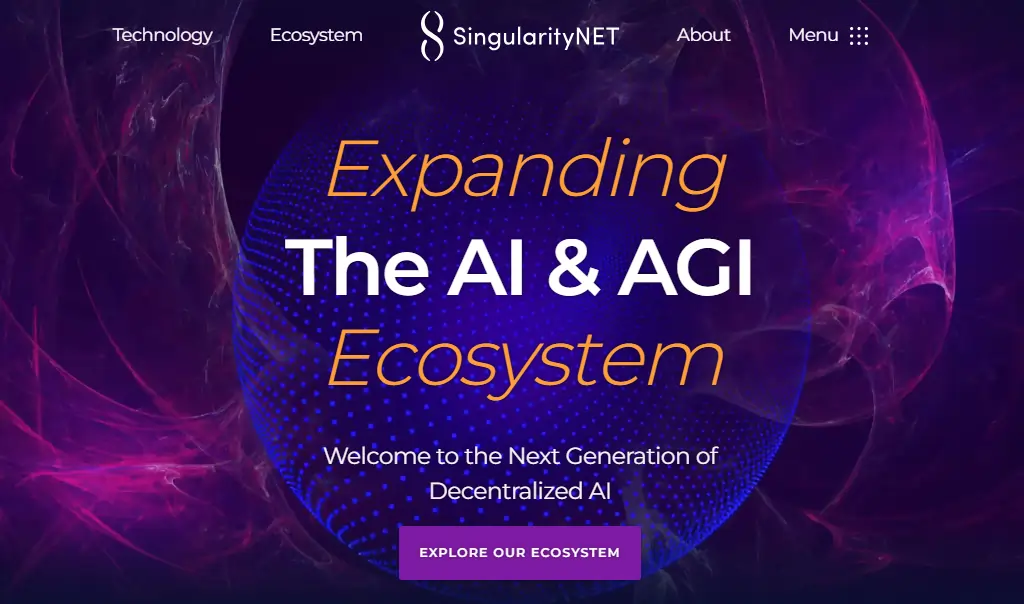
SingularityNET is a decentralized AI marketplace that operates on blockchain technology and its goal is to democratize access to AI technology that has traditionally been dominated by large tech companies.
At its core is an open blockchain-based protocol that allows AI developers to easily monetize their services.
Developers can publish trained models to SingularityNET for anyone to access through API calls. The platform provides the infrastructure to scale AI services, including tools for testing, payments, and reputation tracking.
Key Features of SingularityNET
SingularityNET Market Cap: $369 million (as of December 2023)
2. Phala Network
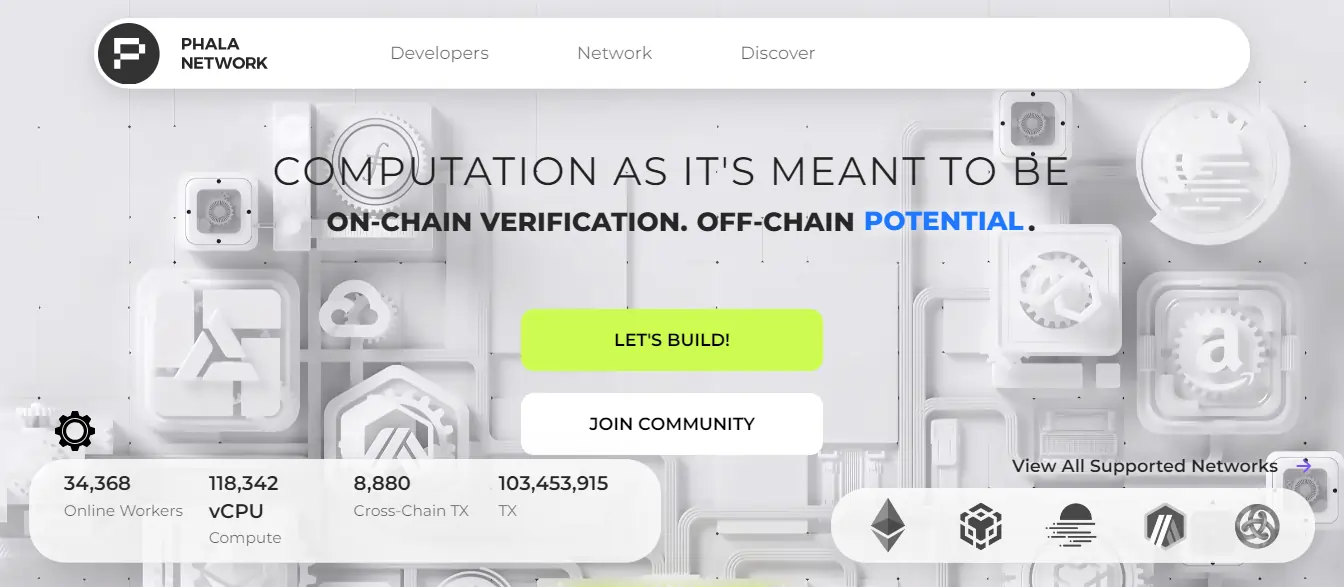
Phala Network is a cloud computing platform built using blockchain technology to enable confidential computing. Phala aims to provide an alternative to centralized cloud services by offering secure and private cloud capabilities.
The network runs on the Kusama network as a parachain within the Polkadot ecosystem. Phala utilizes trusted execution environments (TEEs) available on CPUs to ensure data confidentiality and privacy.
Key Features of Phala Network
Phala Network Market Cap: $67 million (as of December 2023)
3. Fetch.ai
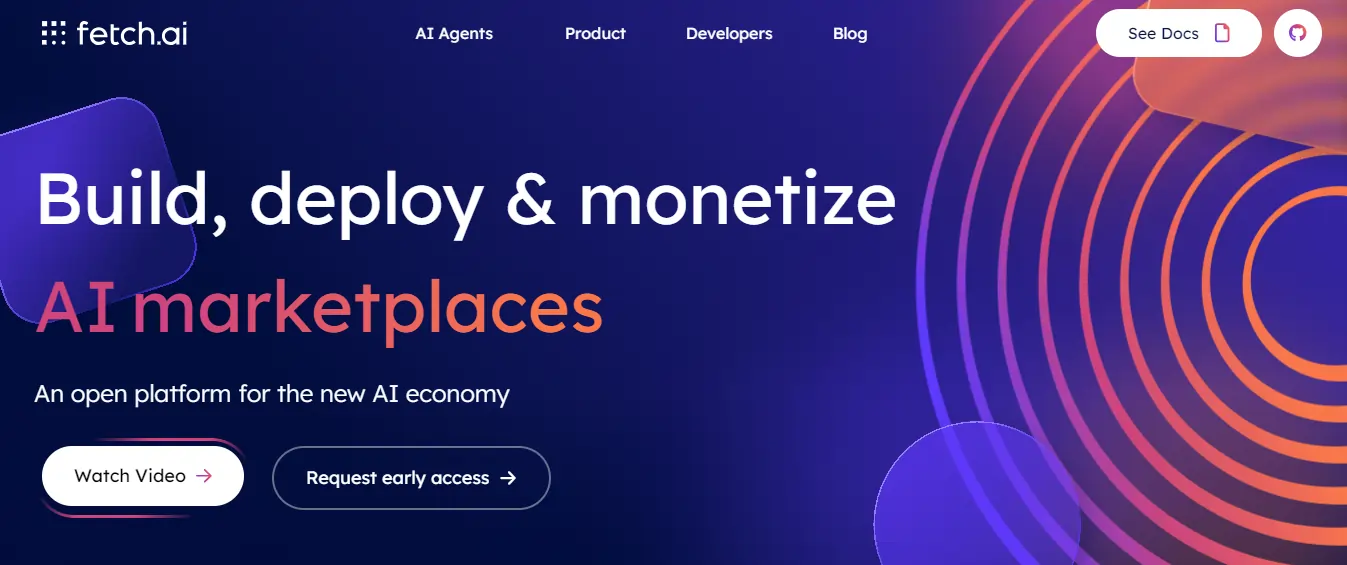
Fetch.ai is a pioneering platform that leverages artificial intelligence (AI) and blockchain technology to facilitate the creation of a decentralized digital economy.
Launched in 2017, Fetch.ai aims to automate a multitude of tasks and services across various industries, thereby fostering a collective intelligence that can optimize outcomes and generate value.
Fetch.ai is built on a high-speed, scalable ledger and uses its native token, FET, as the primary medium of exchange.
It is designed to be user-friendly, enabling even those new to the technology to grasp and utilize its capabilities.
Key Features of Fetch.ai
Fetch.ai Market Cap: $426 million (as of December 2023)
4. Render Token

Render Token leverages the power of blockchain technology to provide GPU-based rendering solutions. It uses the Render Token (RNDR) as its primary form of exchange and connects artists and developers in need of rendering work with node operators who have idle GPU computing power.
This innovative approach allows for the monetization of unused GPU power and the scaling of intensive 3D rendering tasks to the cloud.
The Render Network, as it is also known, is transforming the way rendering work is done, offering a more efficient, cost-effective, and scalable solution for the creation of motion graphics, visual effects, and other 3D applications.
Key Features of Render Token
Render Token Market Cap: $1.16 billion (as of December 2023)
5. Ocean Protocol
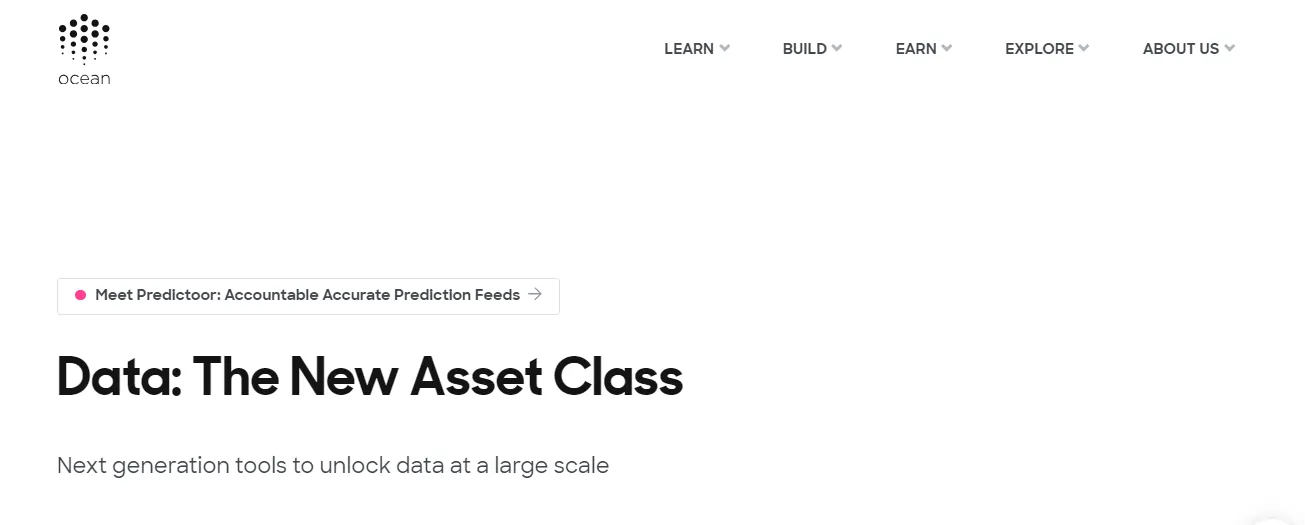
Ocean Protocol is a decentralized platform that facilitates the sharing and monetization of data assets while ensuring privacy and security.
Ocean Protocol utilizes blockchain technology and cryptography to allow data owners to publish, exchange, and consume data in a trusted, transparent manner.
By tokenizing data assets into data tokens and connecting data providers with consumers, Ocean Protocol creates new marketplaces and revenue streams for data.
It provides the technical infrastructure for building decentralized data marketplaces and related services.
Key Features of Ocean Protocol
Ocean Protocol Market Cap: $202 million (as of December 2023)
6. Oasis Network
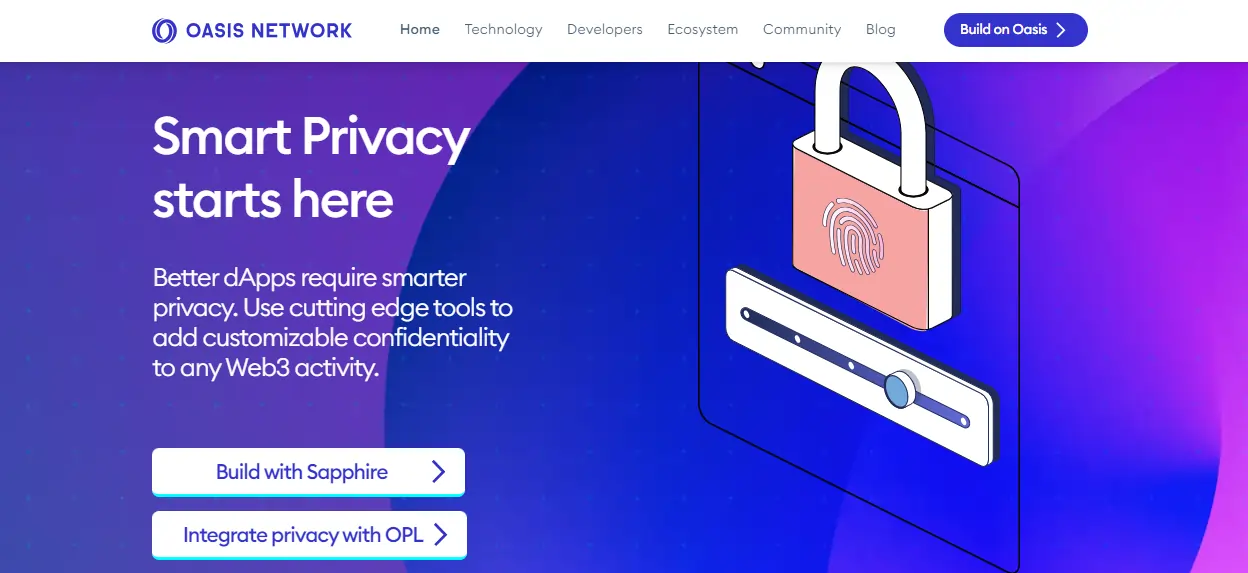
The Oasis Network is a Layer 1 blockchain platform that emphasizes privacy and is specifically designed for Web3 applications.
It operates as a proof-of-stake decentralized network, catering to decentralized finance and a responsible, user-owned data economy.
The Oasis network is engineered to propel blockchain technology into a future where it can begin to solve real-world problems.
It combines high throughput and low gas fees with secure architecture to provide a next-generation foundation for Web3 applications.
Key Features of Oasis Network
Oasis Network Market Cap: $336 million (as of December 2023)
7. iExec RLC
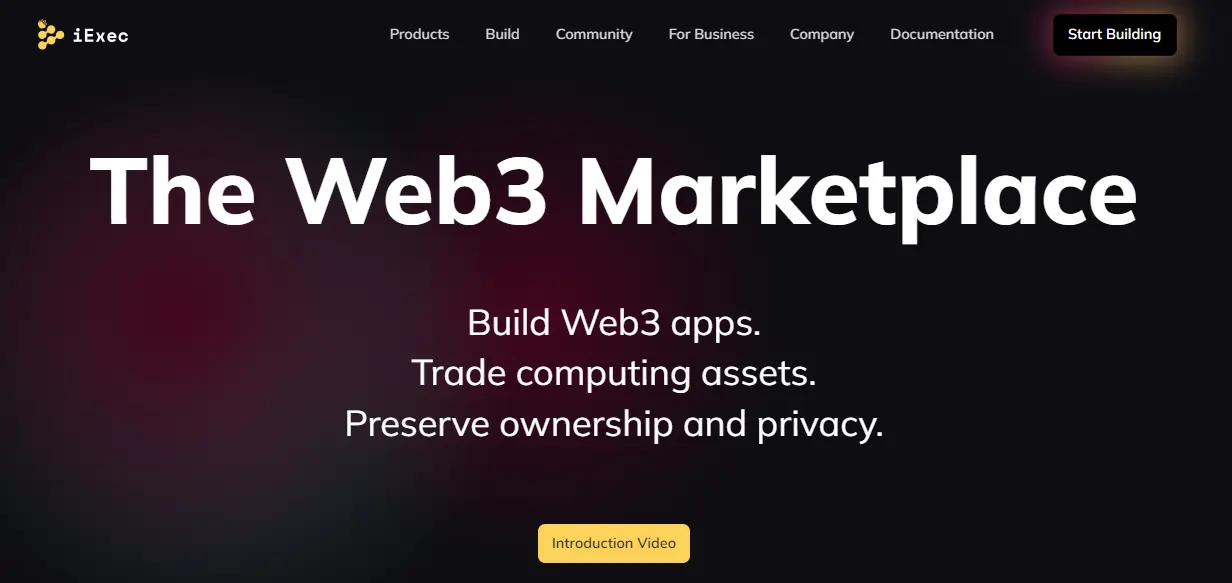
iExec RLC operates a decentralized marketplace for cloud computing resources, combining blockchain technology and confidential computing.
iExec’s mission is to create a distributed cloud infrastructure that competes with centralized cloud services by connecting users with underutilized servers, databases, and data centers.
All transactions on the network, including payments and data exchanges between users and providers, occur through the iExec RLC token in a secure and trustless manner.
iExec focuses on enabling blockchain-based decentralized applications as well as artificial intelligence and high-performance computing use cases that require high levels of security and privacy.
Key Features of iExec RLC
iExec RLC Market Cap: $93 million (as of December 2023)
8. The Graph

The Graph is an indexing protocol for querying decentralized network data, allowing developers to build serverless applications powered by easy access to blockchain information.
The Graph utilizes a network of node operators who index blockchain data which is then packaged into open APIs called subgraphs. Developers can query these subgraphs using GraphQL to retrieve data from blockchains like Ethereum and IPFS.
The Graph enables the building of decentralized applications by organizing and providing easy access to blockchain data. Its native token GRT coordinates the network and incentivizes participants.
Key Features of The Graph
The Graph Market Cap: $1.4 billion (as of December 2023)
9. dKargo
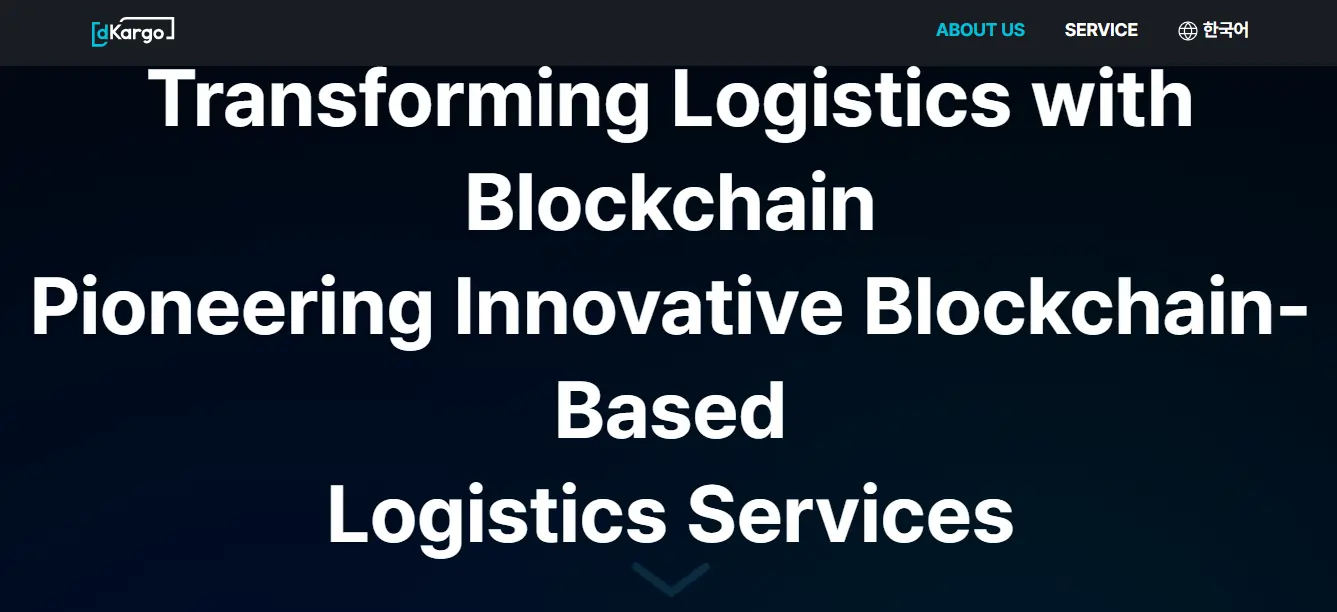
dKargo is a blockchain-based logistics platform aiming to transform the cargo industry by enhancing efficiency, security, and collaboration.
dKargo utilizes blockchain technology and smart contracts to solve trust issues between fragmented participants in logistics networks.
dKargo establishes a tamper-proof ecosystem to promote transparency and accountability throughout the entire supply chain. The open-source protocol connects shippers, carriers, ports, and customs brokers to streamline cargo transport and trade.
Key Features of dKargo
dKargo Market Cap: $117 million (as of December 2023)
10. Alethea AI
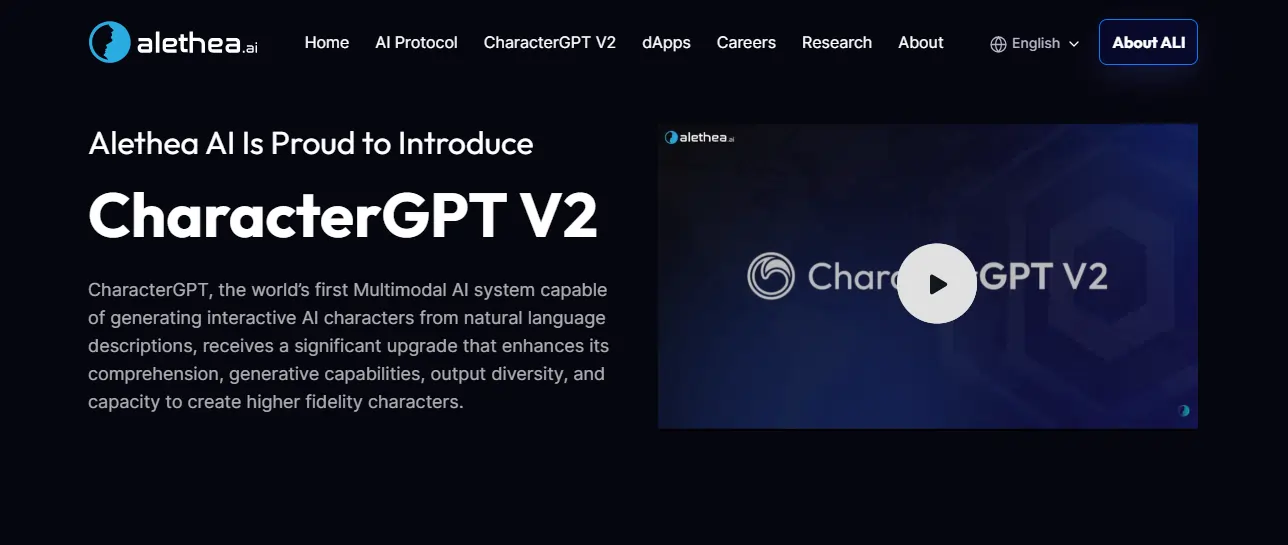
Alethea AI is at the forefront of integrating artificial intelligence and blockchain technology to enable new models of decentralized ownership and governance.
It was founded in 2019 and leverages cutting-edge generative AI to create interactive digital assets and characters.
Through its decentralized protocol, Alethea AI facilitates the minting and training of intelligent NFTs (iNFTs) that possess customized AI capabilities.
As an early innovator bridging AI and blockchain, Alethea AI represents an ambitious vision of the future of creativity, interaction, and asset ownership.
Key Features of Alethea AI
Alethea AI Market Cap: $87 million (as of December 2023)
11. Covalent

Covalent is a blockchain data platform that provides developers with comprehensive access to historical blockchain data.
Covalent empowers the pioneers of tomorrow by building a robust data infrastructure for the entire blockchain ecosystem.
The platform offers a unified API that simplifies the process of accessing and understanding blockchain data, making it easier for developers to build applications in the Web3 space.
Key Features of Covalent
Covalent Market Cap: $87.63 million (as of December 2023)
12. Hera Finance

Hera Finance is an AI-powered, multichain decentralized finance (DeFi) aggregator that aims to reshape the way users interact with the crypto ecosystem.
Hera Finance focuses on providing the best swap rates, multi-hop routes, and trade splitting while ensuring zero-slippage.
Hera Finance uses artificial intelligence and blockchain technology to simplify the process of finding and completing trades across various chains and liquidity sources.
Its native token, HERA, is used to facilitate transactions and incentivize participation within the ecosystem.
Key Features of Hera Finance
Hera Finance Market Cap: $16.66 million (as of December 2023)
Are AI Cryptocurrencies Safe?
The safety of AI cryptocurrencies depends largely on how they are stored and an investor’s risk tolerance.
Like all cryptocurrencies, AI crypto coins face market volatility and potential security threats from hacking. However, the use of AI aims to enhance security measures.
Some AI cryptocurrencies utilize facial recognition and advanced analytics to validate transactions and detect fraud or suspicious activities.
The machine learning models powering the AI crypto tokens can also be trained on new data to continuously improve security over time.
As AI cryptocurrencies are still an emerging technology, we can say that they pose uncertainties around regulation, privacy, and ethical AI practices that need resolution as the field matures. Factors like data bias and security vulnerabilities in algorithms are risks to consider.
Ultimately, while AI enables automation and efficiency improvements, it does not guarantee absolute security or immunity from crypto market swings.
Investors should weigh the advanced functionality promised by AI cryptocurrencies against unresolved challenges.
FAQs on AI Cryptocurrencies
How are AI cryptocurrencies different from regular cryptocurrencies?
AI cryptocurrencies use AI algorithms to enhance their functionality, such as automating transactions and providing predictive analytics.
What are the main benefits of AI cryptocurrencies?
The main benefits of AI cryptocurrencies include increased efficiency, reduced human error, and the ability to process large amounts of data quickly and accurately.
What risks are associated with investing in AI cryptocurrencies?
The risks associated with investing in AI cryptocurrencies include market volatility, regulatory uncertainty, and the potential for AI algorithms to make incorrect predictions.
How can traders utilize AI algorithms for crypto trading?
Traders can use AI algorithms to analyze market trends, make predictions, and automate trading decisions.
How is machine learning used in AI cryptocurrencies?
Machine learning is used in AI cryptocurrencies to train models on blockchain data, identify patterns, and make predictions.
Do I need coding skills to develop AI cryptocurrencies?
While coding skills can be beneficial, there are platforms and tools available that allow individuals to create AI cryptocurrencies without coding.
Are AI cryptocurrencies legal everywhere?
The legality of AI cryptocurrencies varies by country, with some countries having more favorable regulations than others.
Final Words on AI Cryptocurrencies
As we have seen, the integration of artificial intelligence into cryptocurrencies and blockchain networks enables automation, efficiency improvements, and data-driven insights that were not previously possible.
Also, note that fact, the overall global blockchain AI market is projected to reach $8.7 billion by 2030.
However, while the technology shows promise and unexpected growth, there are still open questions around regulation, privacy, security, and ethical AI practices that need to be worked through as the field continues maturing.
Finding the right balance between innovation and responsibility is crucial for fully realizing the potential of AI cryptocurrencies.
In our view, If developers and policymakers work together, these futuristic technologies could create more economic opportunities.
As investors, we need to keep an eye on AI crypto regulations and real-world adoption, assessing both potential gains and risks. The road of the AI Crypto industry ahead will likely still be volatile, but the long-term prospects remain exciting!
Affiliate Disclosure: This post may contain some affiliate links, which means we may receive a commission if you purchase something that we recommend at no additional cost for you (none whatsoever!)

![Top 7 web hosting providers in South Africa: 2024 [80% OFF] 13 Top 7 web hosting providers in South Africa: 2024 [80% OFF]](https://bloggingeclipse.com/wp-content/uploads/2020/01/Agency-1200x800-layout1860-1f1jba8-1-1024x683.jpg)
![SkySilk Review 2024: Hidden Gem in VPS Hosting [Must Read] 14 SkySilk Review 2024: Hidden Gem in VPS Hosting [Must Read]](https://bloggingeclipse.com/wp-content/uploads/2020/07/SkySilk-Review-1024x512.jpg)


![Top 6 Budget Asp.net Web Hosting Providers – [Updated 2024] 17 Top 6 Budget Asp.net Web Hosting Providers – [Updated 2024]](https://bloggingeclipse.com/wp-content/uploads/2018/06/ASP.nert-hosting.jpg)
